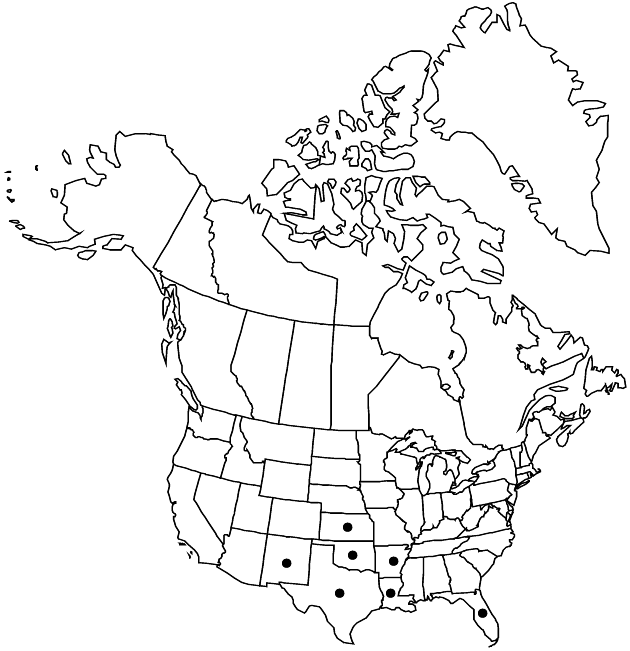Aphanostephus skirrhobasis
Rep. (Annual) Arkansas Geol. Surv. 4: 191. 1891.
Common names: Arkansas lazydaisy
Basionym: Keerlia skirrhobasis de Candolle in A. P. de Candolle and A. L. P. P. de Candolle, Prodr. 5: 310. 1836
Revision as of 20:05, 5 November 2020 by imported>Volume Importer
Annuals, 5–45 cm; vestiture hirsuto-pilose and/or puberulent, stem hairs spreading to deflexed, 0.1–0.3 mm. Phyllary apices acute to short-acuminate. Ray florets (10–)25–45. Disc floret corollas: bases (mature) bulbous-swollen, indurate. Cypselae: hairs apically 1-directionally coiled; pappi usually coroniform, uneven, rarely of acute to awn-tipped scales 0.2–2 mm.
Distribution

Ark., Fla., Kans., La., N.Mex., Okla., Tex., n Mexico.
Discussion
Varieties 3 (3 in the flora).
Selected References
None.
Lower Taxa
Key
| 1 | Leaves thickened, densely, almost felty gray-hairy; sand dunes along Gulf Coast | Aphanostephus skirrhobasis var. thalassius |
| 1 | Leaves not strongly thickened or felty gray-hairy; sandy soils, interior localities | > 2 |
| 2 | Pappi of acute or awn-tipped scales or setiform scales 0.4–2 mm | Aphanostephus skirrhobasis var. kidderi |
| 2 | Pappi coroniform, uneven, ciliate, 0.1–0.3 mm, rarely of awn-tipped scales | Aphanostephus skirrhobasis var. skirrhobasis |